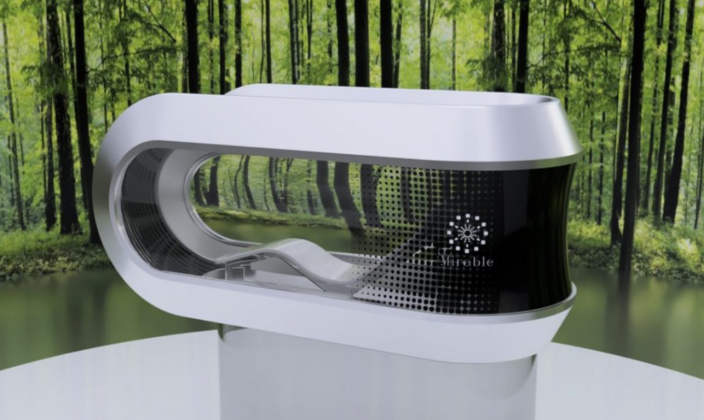
Science, a Japanese technology company specializing in bathroom and kitchen innovation, recently shows to the public its plans to produce a washing machine for humans.
Believe it or not, the concept of a human washing machine isn’t new. At the 1970 Osaka Expo, Japanese electronics giant Sanyo Electric presented its “Ultrasonic Bath”, a human washing machine that cleaned, massaged, and dried the user in a fully-automated 15-minute cycle. The concept never really took off as a commercial product, but now another Japanese technology company wants to take a shot at it, promising to deliver a modern take on the human washing machine by 2025.
Osaka-based Science Co. Ltd., a company known for its many innovations in bath and kitchen technology, has announced its plans to create its own version of the human washing machine as part of its “Mirable product line”. Named “Project Usoyaro”, it adopts the latest “fine bubble technology”, as well as a variety of monitoring sensors and an artificial intelligence system to produce a complex bath experience.
Science has stated that the goal of Project Usoyaro is not only to thoroughly clean the body of the user, but also to provide a healing space where you can relax and unwind to the sound of comforting music and the view of images displayed on a water-resistant(防水的) display inside the machine. Sensors inside the washing machine will measure the state of sympathetic and parasympathetic nerves(交感神经和副交感神经), and the built-in AI will use the collected data to create the most comfortable atmosphere possible.
Science expects that Project Usoyaro will result in a functional human washing machine by 2024, which the company hopes to display at the 2025 Osaka Expo. The project, once completed, will prove to be an incredible scientific achievement of its own and will prove to be a good candidate in the tech industry.
本时文内容由奇速英语国际教育研究院原创编写,未经书面授权,禁止复制和任何商业用途,版权所有,侵权必究!(作者投稿及时文阅读定制请联系微信:18980471698)1.What do we know about “Ultrasonic Bath”?
A It appeared in the 19th century.
B It was the first human washing machine.
C It could massage the user after drying.
D It was suspended due to funding problems.
解析:选B。B细节理解题。根据第二段第二句可知,1970年的大阪世博会上,日本电器巨头三洋电机公司展示了它的“超声波浴缸”,这是首次出现的人类洗澡机;它集清洁、按摩、擦干三种功能于一体;但是最终未能商业化出售(未提及原因)。故选B。
2.What are the sensors in the machine used for?
A Displaying images.
B Cleaning the body.
C Collecting data.
D Playing the music.
解析:选C。C细节理解题。根据第四段最后一句可知,洗澡机内的传感器将测量交感神经和副交感神经的状态,人工智能系统会利用其收集到的数据。即传感器用于收集数据。故选C。
3.What does the author think of the human washing machine?
A Costly.
B Useless.
C Romantic.
D Promising.
解析:选D。D推理判断题。根据最后一句的“The project, once completed, will prove to be an incredible scientific achievement of its own and will prove to be a good candidate in the tech industry.”可知,作者认为该项目一旦完成,将被证明是一项令人难以置信的科学成就,因此作者认为该项目是很有前途的。故选D。
4.Where is the text most likely from?
A A diary.
B A guidebook.
C A magazine.
D A novel.
解析:选C。C推理判断题。本文是一篇科技类说明文,可能出自杂志。故选C。